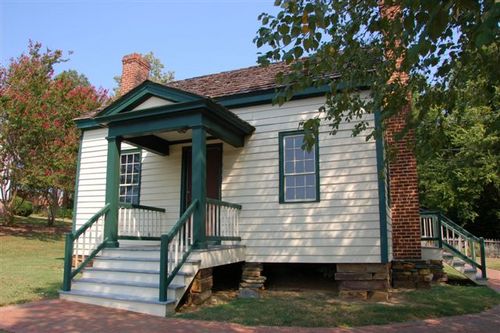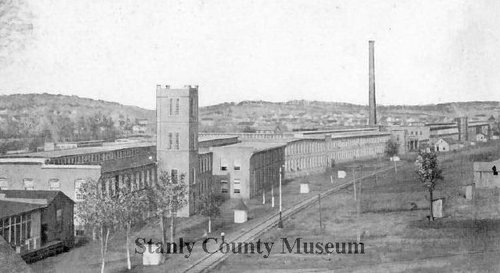History of Albemarle, NC
Albemarle was established in 1841 as the county seat of Stanly County and incorporated as a town in 1857. Stanly County was formed one year earlier from Montgomery County. After Nancy Almond Hearne and her children donated a 50-acre tract, the town was planned on a grid system and divided into 72 equal lots.
 Through most of the 19th Century, Albemarle was a quiet, rustic hamlet surrounded by farmland and thickly-wooded forests. Like all of the county’s scattered villages during this period, Albemarle served as an adjunct to the surrounding rural community, providing artisan industries such as blacksmith and saddlemaking shops, as well as serving as the county seat. The Marks and Snuggs Houses, among the town’s only remaining relics of this by-gone era.
Through most of the 19th Century, Albemarle was a quiet, rustic hamlet surrounded by farmland and thickly-wooded forests. Like all of the county’s scattered villages during this period, Albemarle served as an adjunct to the surrounding rural community, providing artisan industries such as blacksmith and saddlemaking shops, as well as serving as the county seat. The Marks and Snuggs Houses, among the town’s only remaining relics of this by-gone era.
By the early 20th century, Albemarle had become a center of commerce and industry that was shaping, rather than simply responding to, the county’s rural base. Around the turn of the century, the rail lines came to Albemarle, bringing with them the industrialization that spurred the growth of this town with antebellum roots. As you proceed with your tour from the Marks and Snuggs Houses, you’ll see how these changes dramatically altered Albemarle’s built environment and established it as one of North Carolina’s significant textile centers.
As you enjoy your stroll through the streets of Albemarle, you’ll see the old grain silos and textile mills that sprung up along the rail lines, ushering in the town’s first flush of prosperity around the turn of the century. You’ll see how this “railroad boom” resulted not only in the transformation of the town’s commercial scene, but its cultural environment as well. An impressive old high school, a turn-of-the-century opera house, and an old movie theatre dating back to the days of silent films are just some of the treasures you will find.
 But perhaps the most interesting feature you’ll encounter on your tour is the preserved Wiscassett Mill village around Franklin, North First, and North Depot Streets, which remains virtually intact in its early 20th century appearance. See a classic example of the paternalistic social structure that was common to North Carolina textile communities in the early 1900’s.
But perhaps the most interesting feature you’ll encounter on your tour is the preserved Wiscassett Mill village around Franklin, North First, and North Depot Streets, which remains virtually intact in its early 20th century appearance. See a classic example of the paternalistic social structure that was common to North Carolina textile communities in the early 1900’s.
Here you’ll find housing for both mill workers and their supervisors radiating out from the old mill complex on North Depot Street (part of which dates back to 1898). You’ll see a church that served the community (First Street Methodist), the site of the old Wiscassett School that educated its children (current site of the YMCA), and the recreational heart of the community (the old Cannon Park).As the 20th century drew to a close with the promises of a new century ahead, it left behind in Albemarle a wonderful monument to the economic and social movements that shaped it.
The Square
In 1893, the second courthouse structure was built on the site of the current mini-park. In 1973 it was demolished after the present courthouse was built further down South Second Street. The WPA Guide says of the old courthouse that “it was the custom for the court crier to lean from the courtroom window and call witnesses and jurors from the street,” often “farmers who might be refreshing their horses at the town well on South Second Street.”
The Square remains the symbolic center of Stanly County, with the small park serving as home for another Albemarle landmark, the town clock that once hung from the Cabarrus Bank building at the intersection of First and Main Streets. Standing at the Square, one also has a commanding view to the west of what the local citizens called Lowder’s Mountain. This view is a reminder of the beautiful landscape of Stanly County, where the ancient Uwharrie Mountains gradually give way to the rolling countryside of North Carolina’s Piedmont.
Get In Touch
144 N Second St. Albemarle, NC 28001
Mailing Address:
PO Box 2123 Albemarle, NC 28002
Telephone: 704-984-9415
Email: admin@albemarledowntown.com
Hours: M-F: 8am – 5pm
